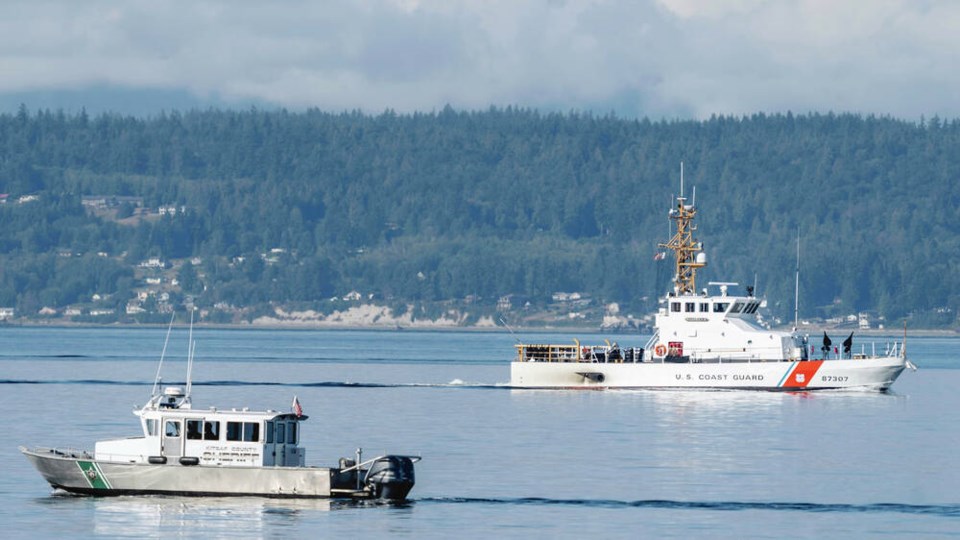Harbour Air says it has returned all 22 of its Otter aircraft to service after maintenance staff completed additional inspections in the wake of a recent U.S. crash of the same model of seaplane.
President Randy Wright said the company did the inspections of parts of the plane’s horizontal stabilizer ahead of directives from Transport Canada. “We’ve been on top of that for a long time,” he said.
Investigators from the U.S. National Transportation Safety Board found that the Sept. 4 crash of an Otter operated by Friday Harbor Seaplanes off Whidbey Island in Washington state may have been caused by parts in an actuator that operated the plane’s horizontal stabilizer — the control surfaces of the tail — becoming detached.
The board issued an urgent safety recommendation to the U.S. Federal Aviation Authority and Transport Canada that the planes be grounded until those parts can be visually inspected.
Transport Canada is in the process of releasing a Civil Aviation Safety Alert highlighting the inspection requirement, according to an emailed statement.
Wright said Harbour Air has always included visual inspection of the parts in question in its regular checks, and did it again with the entire fleet after the accident. “They were all inspected and the fleet is back up and flying.”
He said passengers have not raised any concerns since the U.S. crash, and Harbour Air continues to be fully confident in the aircraft.
Harbour Air, which regularly flies in and out of Victoria and Vancouver harbours, is the largest seaplane airline in North America, with 300 daily scheduled flights to 20 destinations.
Larry Langford, operations manager for Campbell River-based Vancouver Island Air, which also employs a couple of Otters, notes that it’s only the second incident since the Otter was put into service in 1955. He says parts for the aircraft are being used beyond their service limits because they are hard to find or no longer being manufactured.
“This is the reason we started manufacturing Otter parts,” he said. “We now manufacture more parts for the Otter than any other company, including the parts that failed causing this accident.”
Langford said Vancouver Island Air carries out a full teardown and inspection of the actuator on its two aircraft annually, while the minimum requirement is every four years.
Victoria-based Viking Air, which holds the airworthiness certificate for de Havilland aircraft, says it has issued a service letter to operators of de Havilland DHC-3 Otter seaplanes to visually inspect the parts linked to the crash, which killed all 10 onboard.
Neil Sweeney, vice-president of corporate affairs for de Havilland Canada at Viking, said a number of the operators had already been inspecting the problem parts, but the company formally issued the letter last week.
Manufacturing of the Otter, most of which were built in the 1950s and ’60s, was discontinued decades ago, but Sweeney said 161 of the 466 made are still flying and Viking still puts considerable resources into making sure the planes remain airworthy and manufactures spare parts.
Despite the age of remaining aircraft, Sweeney said that because they’re not pressurized during flight, “there’s no end date, or best-before date” on the airframes, so long as they’re properly maintained.
Sweeney said the National Transportation Safety Board asked Viking engineers to participate in the investigation, which is common practice for aviation firms.
“Our engineers would provide the drawings and provide advice as to what is normal and what you should find in an intact circumstance,” Sweeney said.
According to the National Transportation Safety Board bulletin, investigators found in examining the wreckage a clamp nut at the top end of the actuator’s assembly had become unscrewed, likely during flight, and a wire lock ring designed to prevent the nut from coming loose wasn’t present.
Sweeney said the inspection found the critical nut unscrewed, but the threads it attached to were intact “which, to them, suggests that the mechanism came apart, not as part of a crash, but prior.”
The U.S. safety board’s urgent notice said the Friday Harbor Seaplanes Otter took off from its base Sept. 4 and reached level flight, continuing for 18 minutes before climbing slightly then plummeting about 1,000 feet in a near vertical dive into the waters of Mutiny Bay. The Seattle Times reported that witnesses observed the plane spinning on the way down but without any “pitch change” to the engine’s sound during the descent.
Sweeney wouldn’t comment on the National Transportation Safety Board’s preliminary findings in the crash specifically, but said the work of regulators to identify the causes of crashes “is invaluable to us.”



